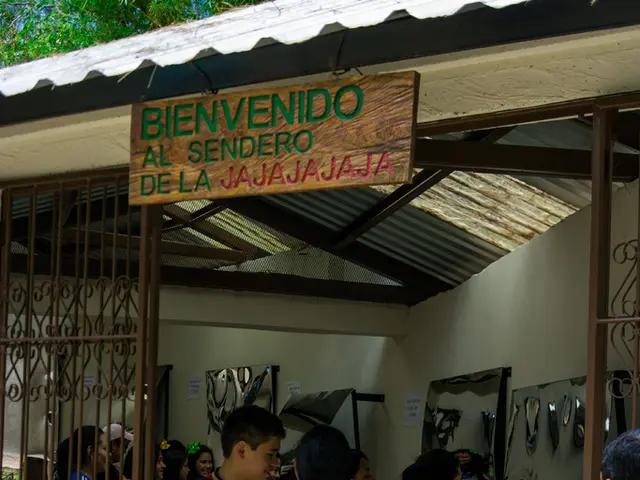Shining Up Spider Silk: A Flicker of Excitement with Genetically Modified Spiders
Genetically Altered Spider Silk Illumination via CRISPR Technology - Glowing-red spider silk cut by scissors: initial application on arachnids
Ever dreamt of weaving a web that glows in the dark? Well, scientists at the University of Bayreuth have taken a bold leap, shedding new light on the potential of CRISPR/Cas9 gene editing with the first-ever attempt at glowing spider silk production!
Here's the lowdown on the gene-editing tech these geniuses have employed, and what they've done to our arachnid friends!
CRISPR/Cas9 Gene Scissors: The Genetic Chop Shop
CRISPR/Cas9 acts like the ultimate molecular butcher, identifying and slicing specific DNA sequences. Once the cell's natural repairman steps in, the DNA gets repaired, allowing gene disabling or fresh genetic matter insertion. This gene-editing wunderkind has made waves, turning heads in fields including plant breeding, biotech, and medicine.
Welcome to the Bayreuth Show: Glowing Spider Silk Edition
Researchers at the University of Bayreuth crafted an injection solution with CRISPR/Cas9 components and a red fluorescent protein sequence. It was then injected into the eggs of unhatched female web-spinning spiders. Once mated with males of the same species, the little critters unleashed a ray of color on the world with their red-flashing silk.
Spider Silk: Luminous and Strong
Spider silk is nature's own miracle—it's both strong and flexible. Now, imagine harnessing that power to weave a glowing thread. Sounds like science fiction, but it's not! Injection, gene disruption, and fresh DNA insertion — it's all part of the process, folks!
Potential Challenges on the Spider’s Path to Glow-tination
While this isn't your average DIY project, it's straightforward compared to manipulating the genes of our eight-legged pals. However, with their complex life cycles and unique gene expression systems, spiders pose unique challenges. Silkworms, for instance, are much easier to work with. For the spider project, scientists need to crack the code on creating efficient methods to introduce the CRISPR/Cas9 into spider embryos or cells, paving the way for fluorescence in their silk.
The Future: Glo-worms Galore?
While we're not quite at the stage of mass-producing glowing spider silk just yet, advancements in gene-editing tools like CRISPR/Cas9 bring us ever closer to unlocking new possibilities for various organisms, including the elusive spider. So, stay tuned, because it won't be long before bioluminescent beasts creep into our consciousness (and maybe our webs)!
Gene ScissorsSpider SilkUniversity of BayreuthDNA
- The first-time scientists at the University of Bayreuth employed CRISPR/Cas9 gene editing to produce glowing spider silk was a groundbreaking moment in the field.
- With the injection of a solution containing CRISPR/Cas9 components and a red fluorescent protein sequence, researchers were able to disable certain genes and insert the red fluorescent protein into the DNA of unhatched spider eggs.
- The third challenge for scientists working with spiders is finding efficient methods to introduce the CRISPR/Cas9 into spider embryos or cells, which will help make their silk glow.
- The second advancement in gene-editing tools like CRISPR/Cas9, after medically disabling sites, could potentially lead to the creation of glowing spiders and various other bioluminescent organisms.




